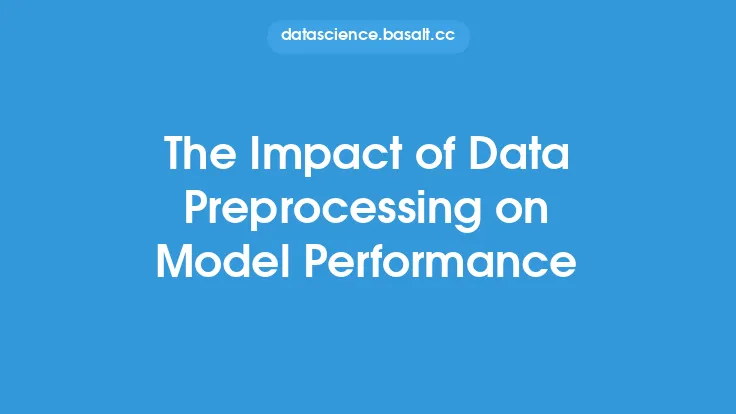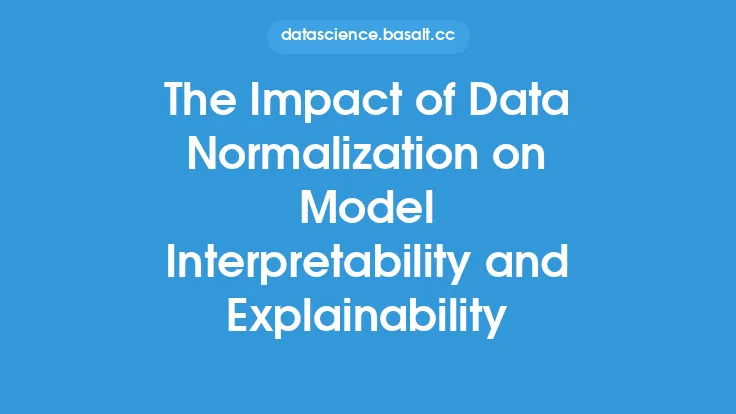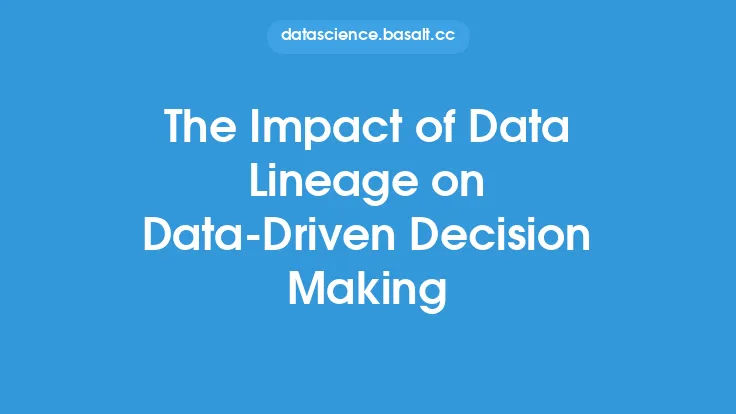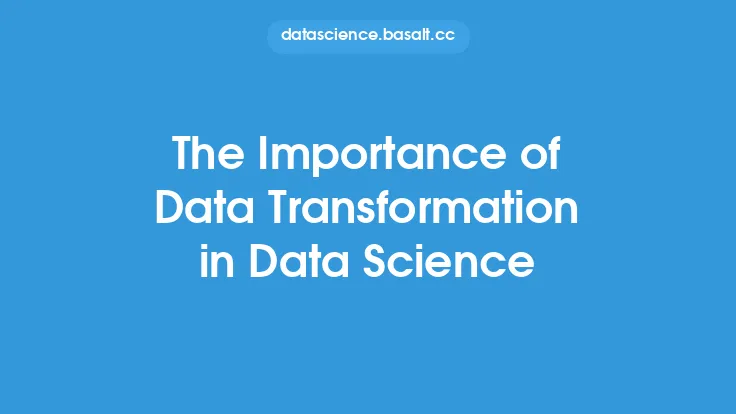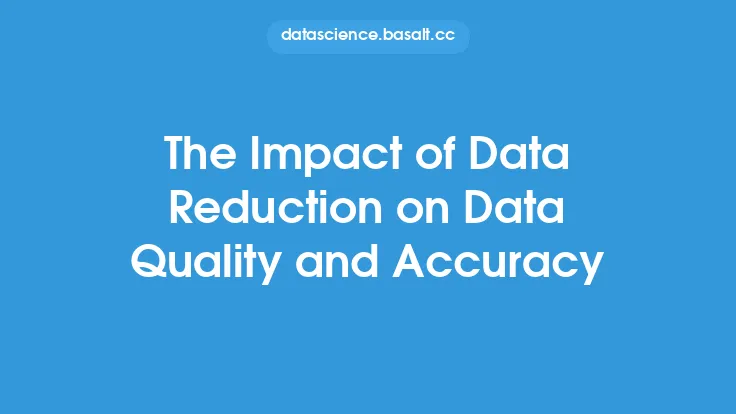Data transformation is a crucial step in the data analysis process, and its impact on data visualization cannot be overstated. When data is transformed, it is converted from its raw, unprocessed form into a more suitable format for analysis and visualization. This process can involve a range of techniques, including aggregation, normalization, and feature scaling, among others. The goal of data transformation is to make the data more accessible, interpretable, and meaningful, which in turn enables more effective data visualization.
Introduction to Data Transformation
Data transformation is a fundamental concept in data analysis, and it plays a critical role in preparing data for visualization. The process of transforming data involves taking the raw data and applying various techniques to convert it into a more suitable format for analysis. This can include handling missing values, removing outliers, and transforming variables to meet the assumptions of statistical models. By transforming the data, analysts can identify patterns, trends, and relationships that may not be immediately apparent in the raw data.
The Role of Data Transformation in Data Visualization
Data transformation is essential for effective data visualization. When data is transformed, it becomes more suitable for visualization, and analysts can create more informative and engaging visualizations. For example, transforming categorical variables into numerical variables can enable the creation of more detailed and nuanced visualizations. Similarly, transforming variables to meet the assumptions of statistical models can enable the creation of more accurate and reliable visualizations. By transforming the data, analysts can create visualizations that are more informative, more engaging, and more effective at communicating insights and findings.
Types of Data Transformation
There are several types of data transformation, each with its own strengths and weaknesses. Some common types of data transformation include:
- Aggregation: This involves combining multiple values into a single value, such as calculating the mean or median of a set of numbers.
- Normalization: This involves scaling numeric values to a common range, such as between 0 and 1, to prevent differences in scale from affecting the analysis.
- Feature scaling: This involves transforming variables to have similar scales, such as standardizing variables to have a mean of 0 and a standard deviation of 1.
- Log transformation: This involves transforming variables using the logarithmic function, which can help to stabilize variance and make the data more normal.
- Polynomial transformation: This involves transforming variables using polynomial functions, such as squaring or cubing the values, which can help to capture non-linear relationships.
The Impact of Data Transformation on Data Visualization Tools
Data transformation has a significant impact on data visualization tools, such as Tableau, Power BI, and D3.js. These tools rely on transformed data to create interactive and dynamic visualizations. By transforming the data, analysts can create more detailed and nuanced visualizations, and can take advantage of the advanced features and capabilities of these tools. For example, transforming data to create a hierarchical structure can enable the creation of drill-down visualizations, while transforming data to create a network structure can enable the creation of network visualizations.
Best Practices for Data Transformation
To get the most out of data transformation, it is essential to follow best practices. Some best practices for data transformation include:
- Handling missing values: This involves deciding how to handle missing values, such as imputing them with mean or median values, or removing them from the analysis.
- Removing outliers: This involves identifying and removing outliers, which can affect the accuracy and reliability of the analysis.
- Transforming variables: This involves transforming variables to meet the assumptions of statistical models, such as normality and linearity.
- Validating transformations: This involves validating the transformations to ensure that they are accurate and reliable, and that they do not introduce bias or error into the analysis.
Common Challenges and Limitations
Despite the importance of data transformation, there are several common challenges and limitations that analysts may encounter. Some common challenges and limitations include:
- Over-transformation: This involves transforming the data too much, which can lead to loss of information and accuracy.
- Under-transformation: This involves not transforming the data enough, which can lead to biased or inaccurate results.
- Choosing the wrong transformation: This involves choosing a transformation that is not suitable for the data or the analysis, which can lead to inaccurate or misleading results.
- Dealing with complex data: This involves dealing with complex data structures, such as hierarchical or network data, which can require specialized transformation techniques.
Future Directions and Emerging Trends
The field of data transformation is constantly evolving, and there are several future directions and emerging trends that analysts should be aware of. Some future directions and emerging trends include:
- Automated data transformation: This involves using machine learning and artificial intelligence to automate the data transformation process, which can save time and improve accuracy.
- Real-time data transformation: This involves transforming data in real-time, which can enable more timely and responsive analysis and decision-making.
- Big data transformation: This involves transforming large and complex datasets, which can require specialized techniques and tools.
- Cloud-based data transformation: This involves transforming data in the cloud, which can enable more scalable and flexible analysis and decision-making.

